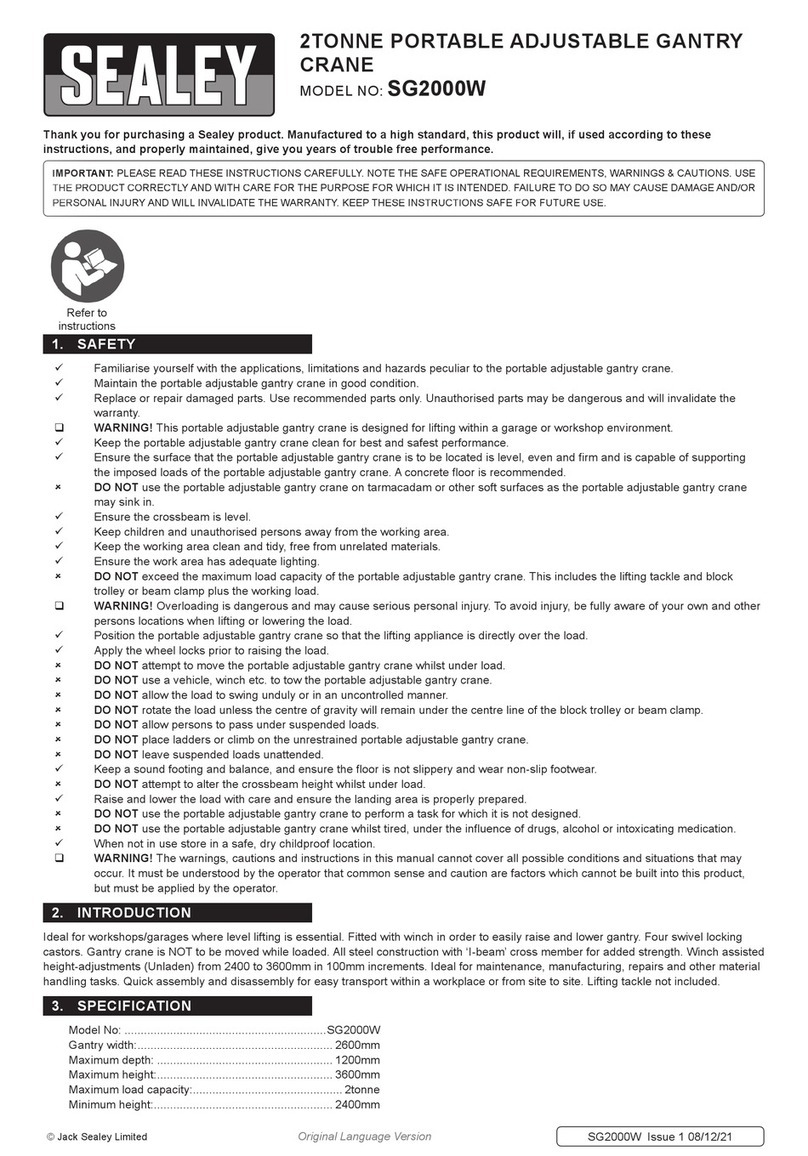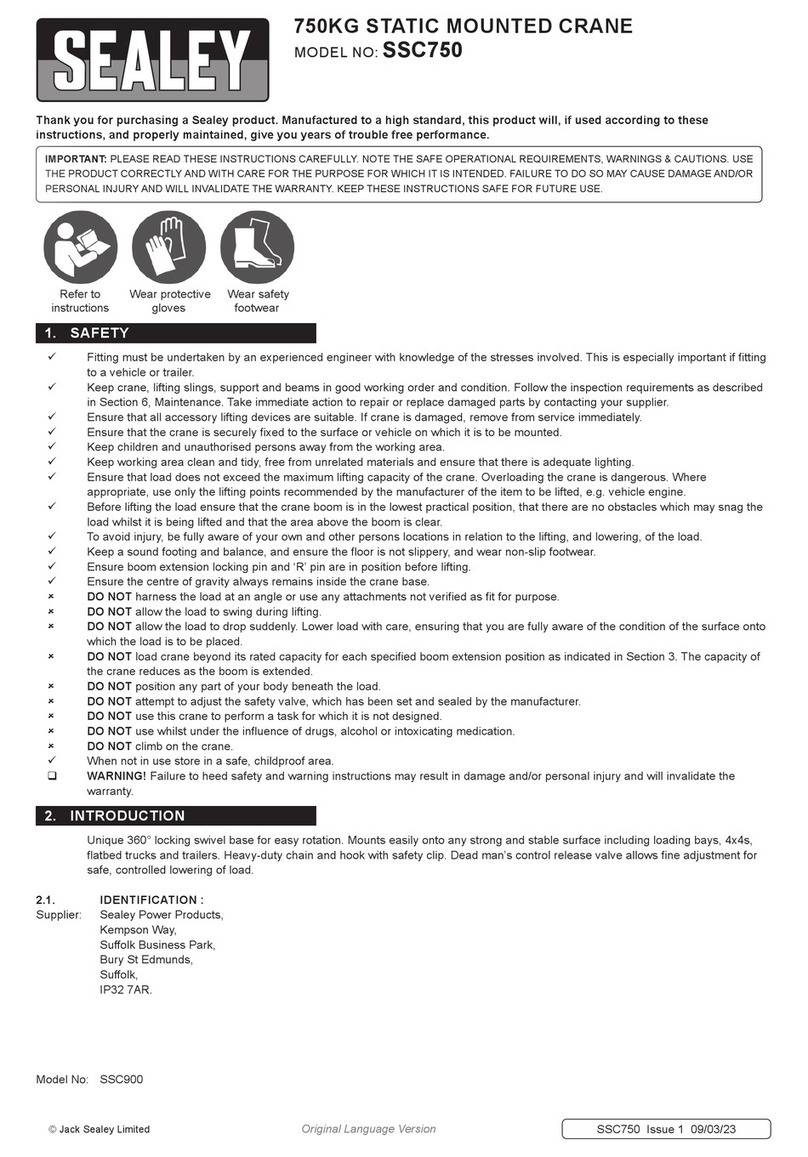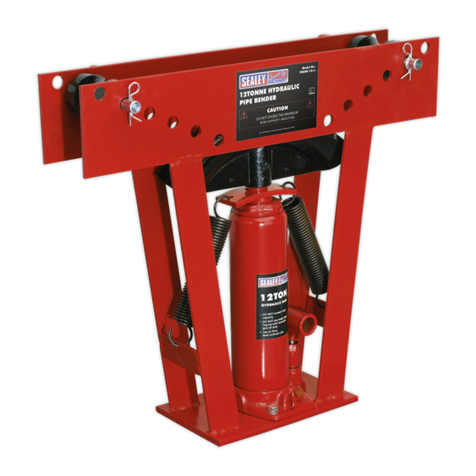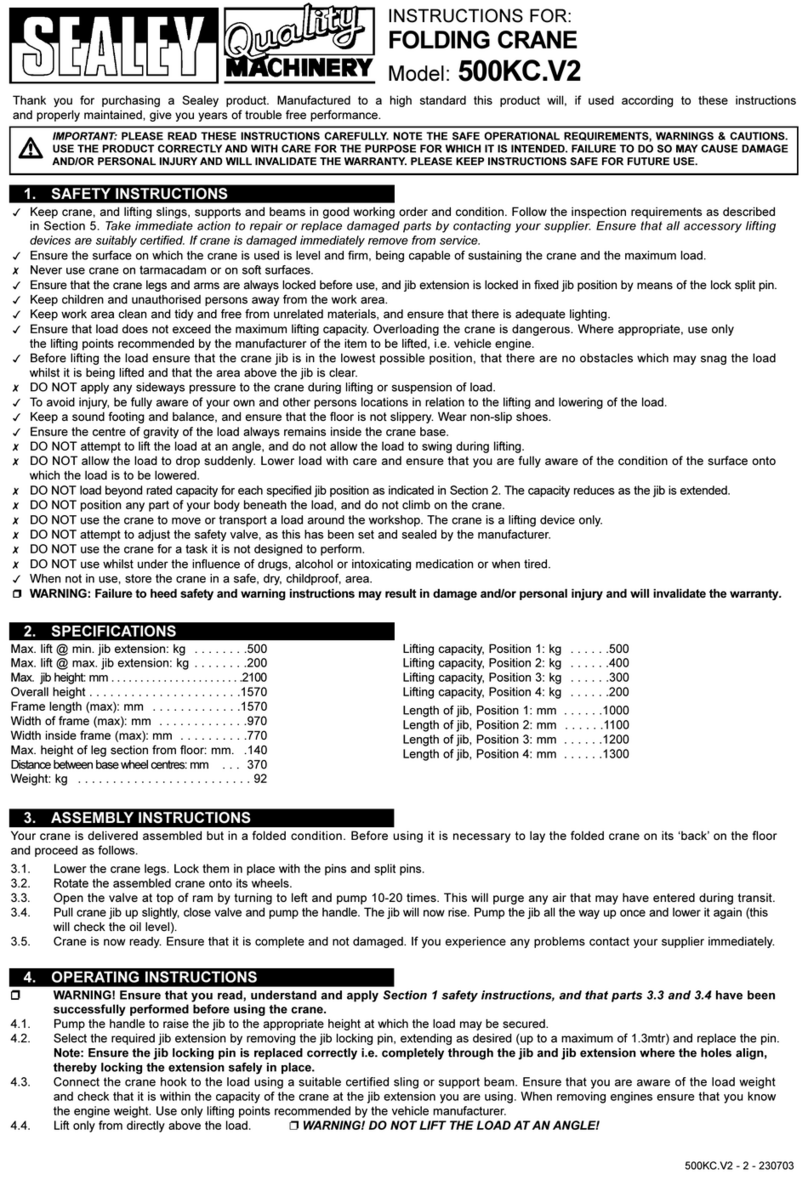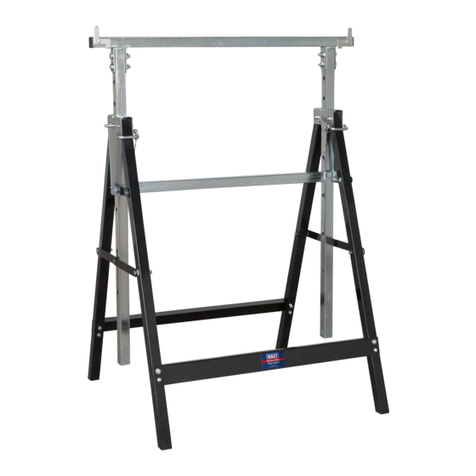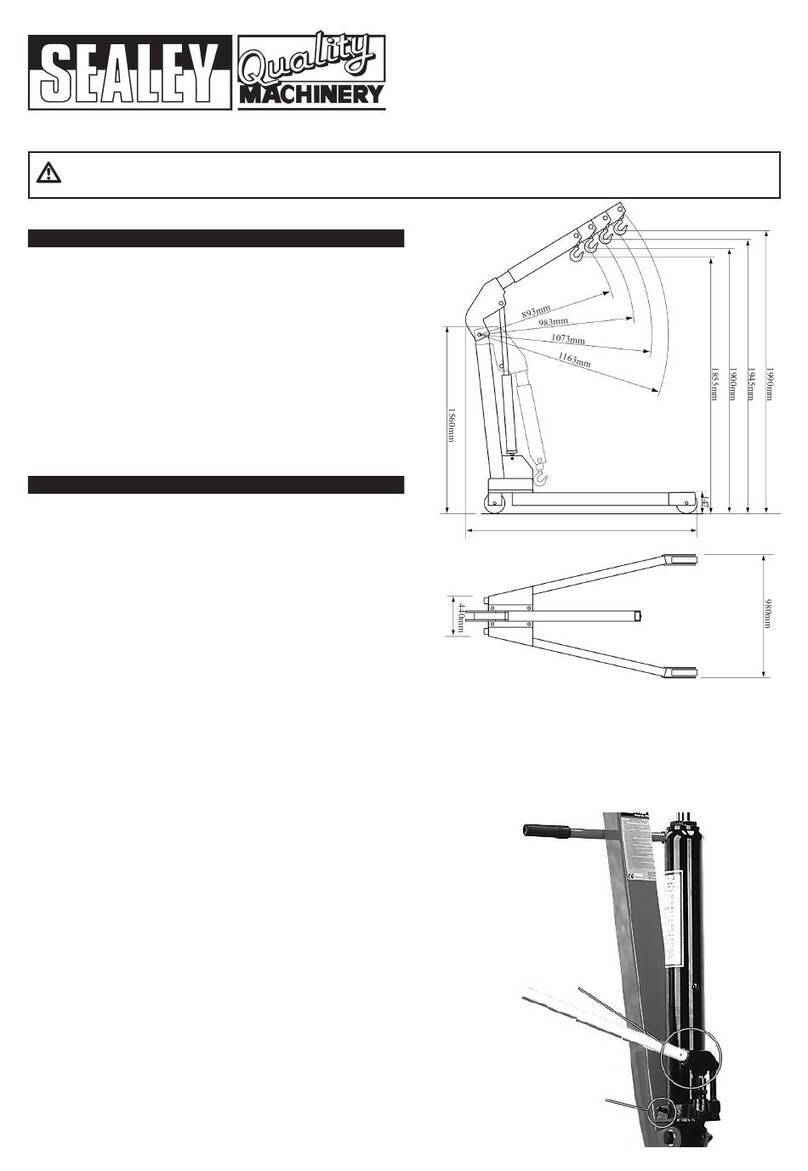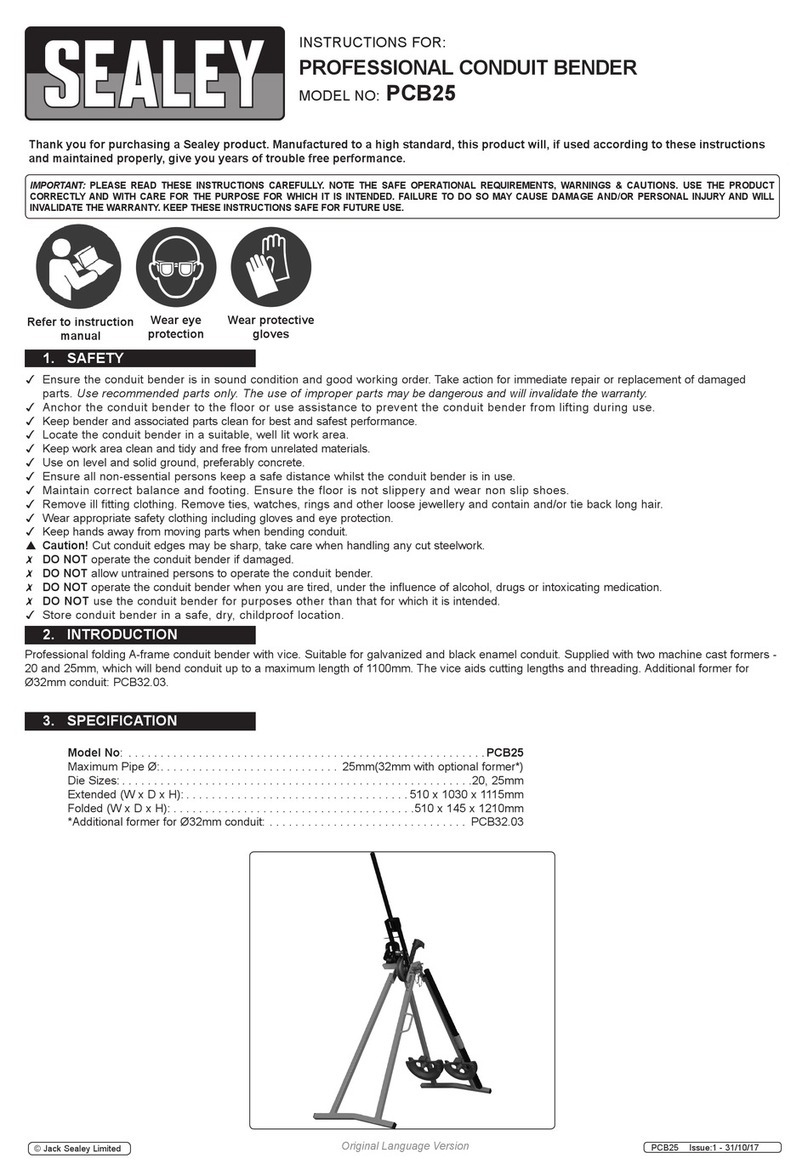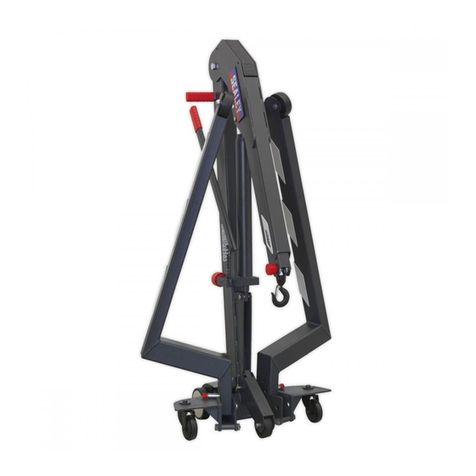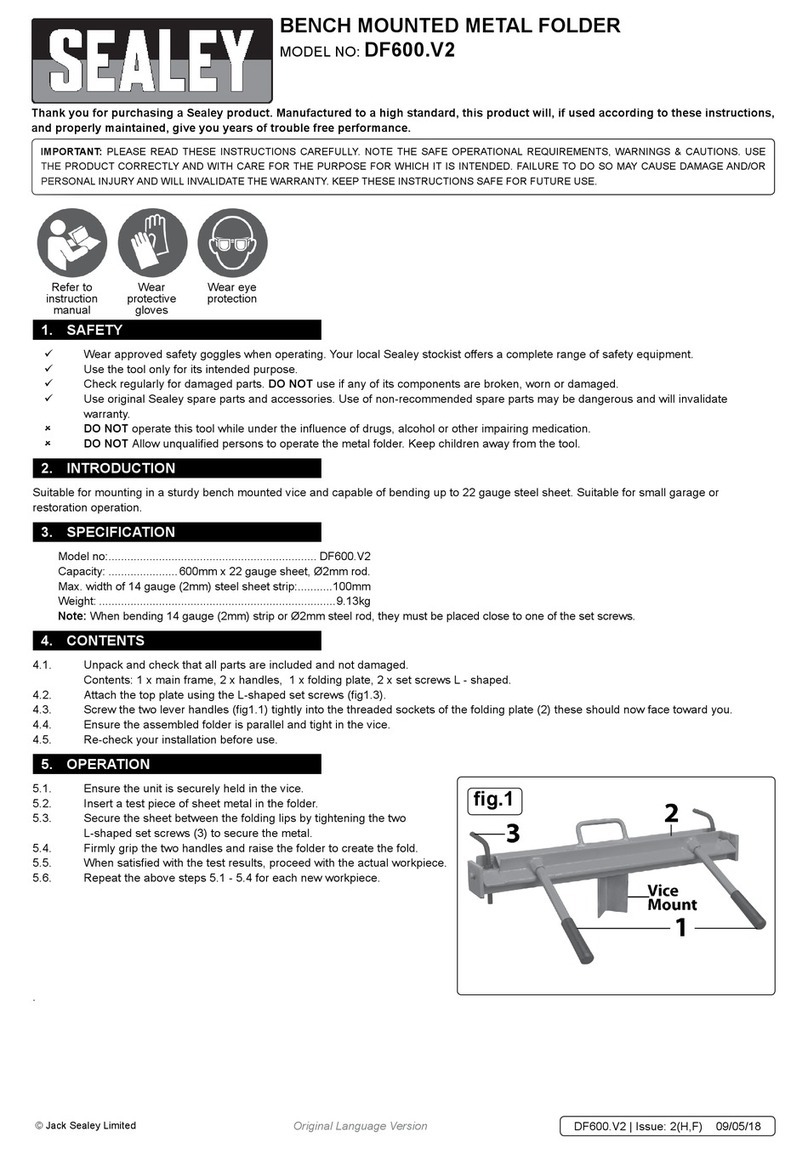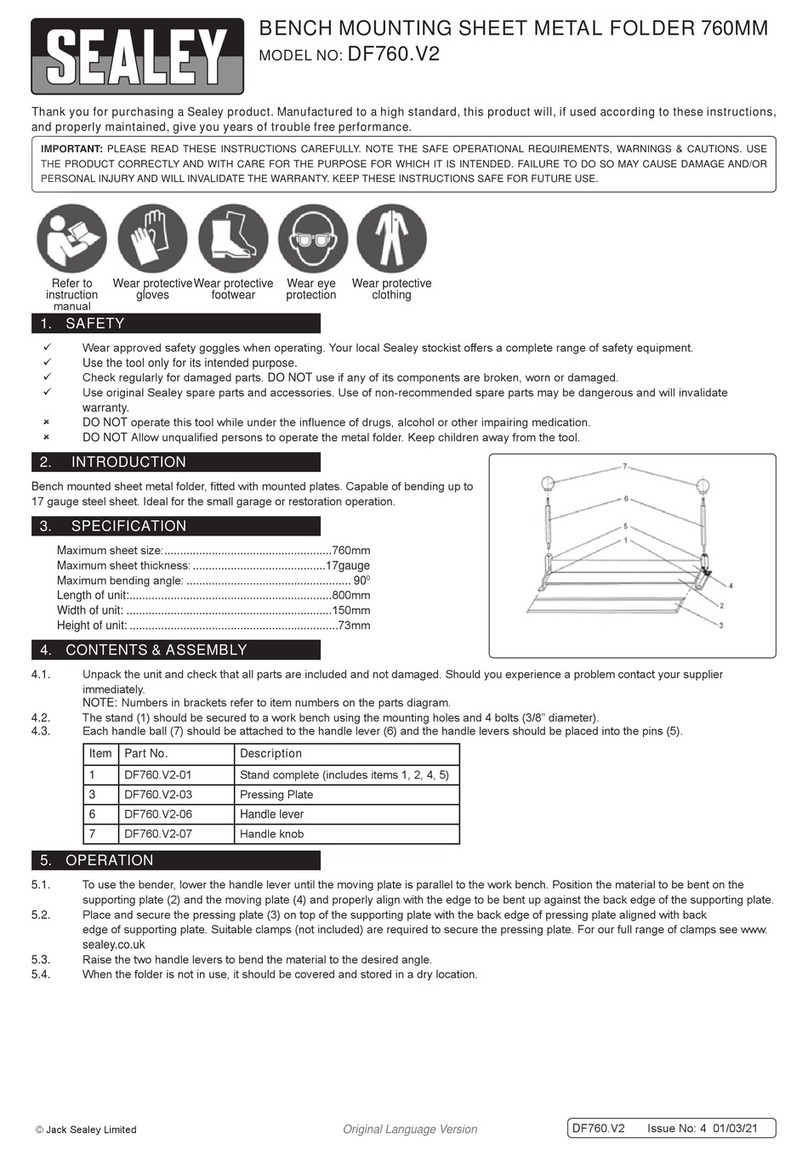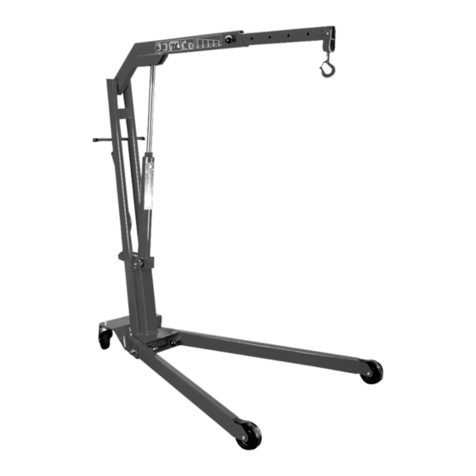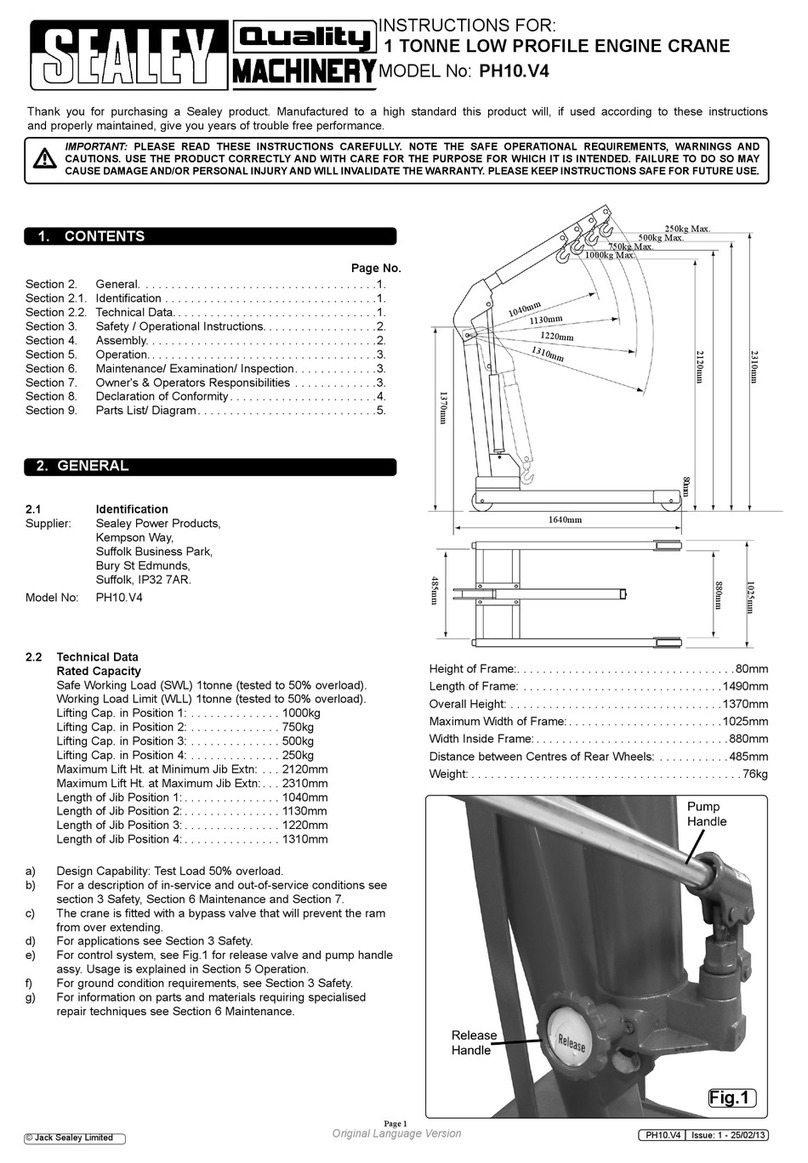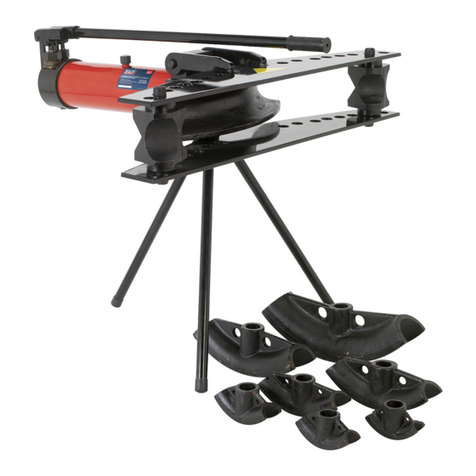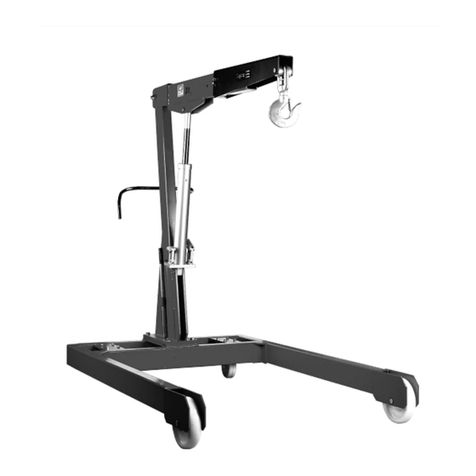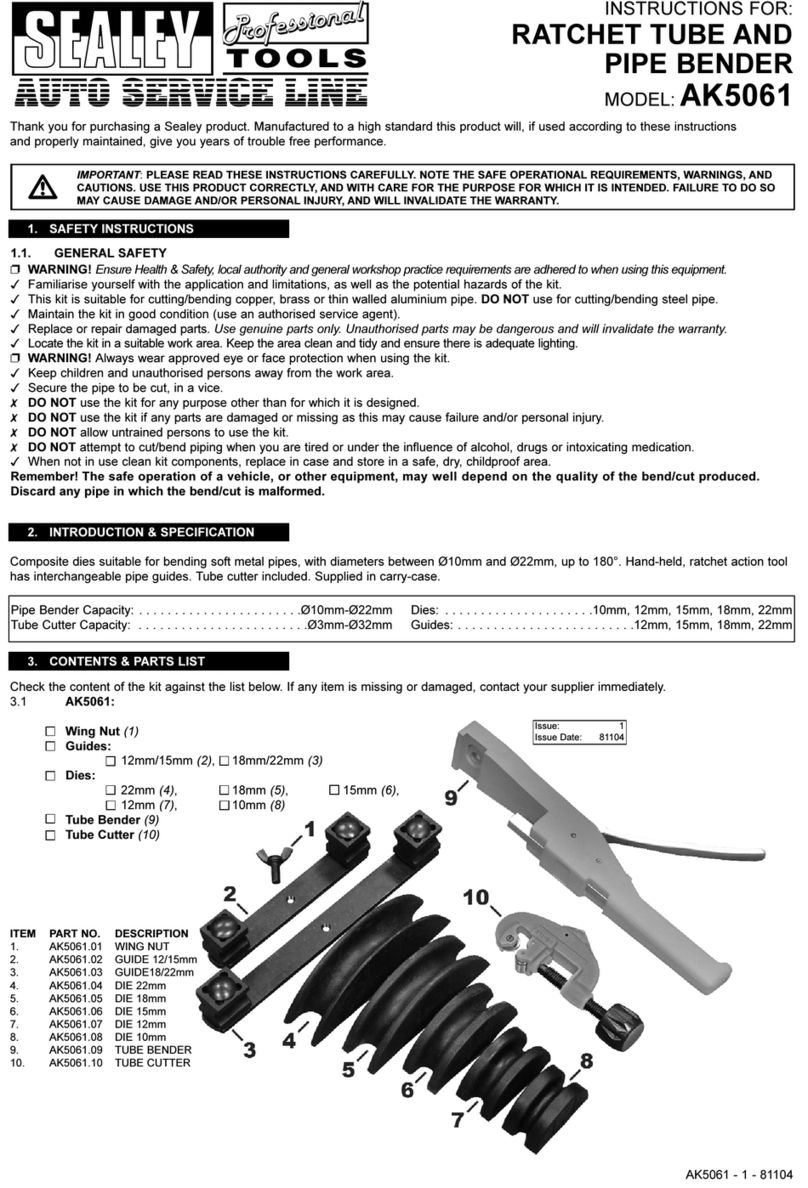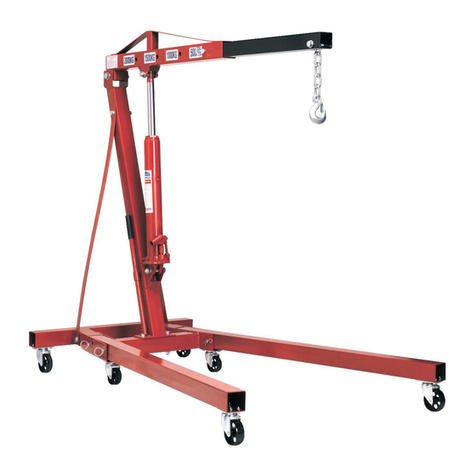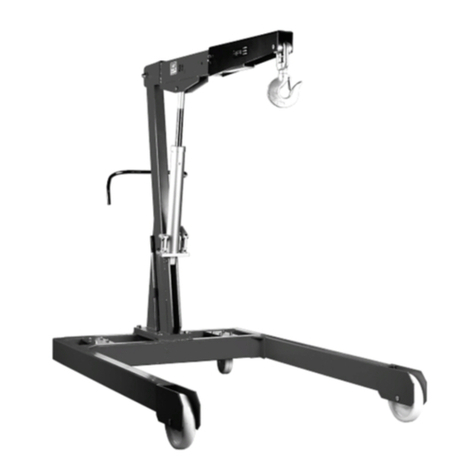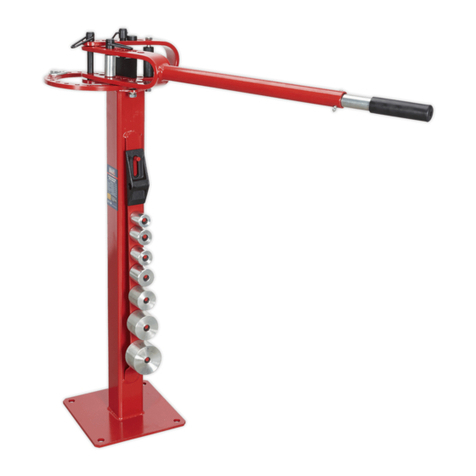
3. SPECIFICATION
TECHNICAL DATA
Rated Capacity
Safe Working Load (SWL) 1t (tested to 50% overload).
Model No:...................................................................... PH10
Height jib down ........................................................ 1300mm
Height legs folded .................................................... 1496mm
Height of frame .......................................................... 100mm
Length of jib position 1 ............................................. 1010mm
Length of jib position 2 ............................................. 1100mm
Length of jib position 3 ............................................. 1190mm
Length of jib position 4 ............................................. 1280mm
Length...................................................................... 1600mm
Lifting capacity in position 1 ....................................... 1000kg
Lifting capacity in position 2 ......................................... 750kg
Lifting capacity in position 3 ......................................... 500kg
Lifting capacity in position 4 ......................................... 250kg
Max lift Ht at jib position 1 ........................................ 1870mm
Max lift Ht at jib position 2 ........................................ 1930mm
Max lift Ht at jib position 3 ........................................ 1990mm
Max lift Ht at jib position 4 ........................................ 2050mm
Rear width.................................................................. 670mm
Width front frame ..................................................... 1075mm
Width inside front frame ............................................. 958mm
3.1. For a description of in-service and out-of-service conditions see Section 1 Safety, Section 6 Maintenance.
3.2. Thecraneisttedwithabypassvalvethatwillpreventtheramfromoverextending.
3.3. For applications see Section 1 Safety.
3.4. Forcontrolsystem,seeg.2forreleasevalve,pumpassemblyandhandle.OperationisexplainedinSection5.
3.5. For ground condition requirements, see Section 1 Safety.
3.6. For information on parts and materials requiring specialised repair techniques see Section 6 Maintenance.
4. ASSEMBLY
Refer to attached parts list and g.1.
WARNING! It takes two people to build the crane. Leave all nuts loose until assembly is complete.
NOTE: Refer to attached parts diagram. Unpack and check against parts lists.
4.1. Attach castor wheels: fronts (parts 1-6), rears: (19) with screw (20), washer (2,) nut (1).
4.2. Fix legs (7 & 7A) into frame base (11) with bolt (14).
4.3. Fit connector plate brackets (16) to frame base (11) using screws (15).
4.4. Insert locating pin (13) into frame base (11).
4.5. Connect main column (27) to frame base (11).
4.6. Fixbottomofsupportstraps(23)ontoframebase(11),usebolt(22),washer(17)nut(18).Nextxtopofsupportstraps(23),use
bolt (14) washer (17) nut (18).
4.7. Connectmainboom(35)tomaincolumn(27)withbolt(32)atwasher(25)andnut(33).
4.8. Fixhydraulicram(28)tomaincolumn(27)withbolt(24)atwasher(25)andnut(26).
4.9. Fix hook (40) to extension boom (37), use bolt (38) washer (17) and nyloc nut (39).
4.10. Fit extension boom (27) into main boom (35) secure with locating pin (36) and hitch pin (12).
4.11. Fit rear handle (30) onto main column (27) with screw (15) and spring washer (2).
4.12. Tightenallxingsandcheckthecrane’sstabilitybeforeuse.
4.13. Bleed hydraulic system: Place the pump handle into the pump socket, ensure the release handle is in the open position and
pump the handle 10-15 times, through the full stroke, thus bleeding from the hydraulic system any air which may have entered the
system during transit.
4.14. How to store: Removelocatingpin(13)andliftlegstovertical.Retlocatingpin(13)throughthetopholeoftheconnectorplate
bracket (16) secure with hitch pin (12). OPERATION
4.15. OPERATION (Refer to Section 6.2 (a) regarding inspection before each and every use).
a) Ensure hand wheel is in the raise (fully clockwise position).
b) Place handle into pump socket and pump, the jib will raise. Continue to pump until the jib reaches the height at which the load can be secured.
c) Connect the crane hook to the load using a suitable certified sling or support beam. Ensure you are aware of the load weight,
and check that it is within the capacity of the crane (at the jib extension you are using) and the sling or support beam.
When removing engines ensure you know the weight to be lifted. Use only the lifting points recommended by the vehicle
manufacturer.
d) Lift only from directly above the load. WARNING! DO NOT LIFT THE LOAD AT AN ANGLE!
e) To lower load, turn release hand wheel VERY SLOWLY anti-clockwise avoiding any sudden movement.
WARNING! DO NOT allow the load to drop suddenly.
f) The crane is not a transportation device but may be used to reposition the load being worked on. To do so, lower load and jib
with care, to the lowest possible point before attempting to move. DO NOT try to move crane in a sideways direction. The crane is
not designed to support the load indefinitely. When you have repositioned the load, lower the load onto a secure and
appropriate working base, being fully aware of your own and other persons locations in relation to the lowering load.
g) When load has been secured, remove lifting sling, support beam etc. and place crane in a safe location with lifting beam fully lowered.
Original Language Version
© Jack Sealey Limited PH10.V6 Issue:1 22/03/21
g.1
